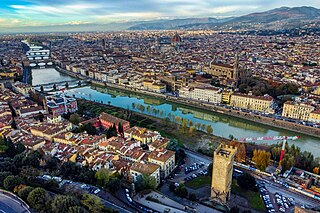
Florence is the capital city of the Italian region of Tuscany. It is also the most populated city in Tuscany, with 360,930 inhabitants in 2023, and 984,991 in its metropolitan area.

The Renaissance is a period of history and a European cultural movement covering the 15th and 16th centuries. It marked the transition from the Middle Ages to modernity and was characterized by an effort to revive and surpass the ideas and achievements of classical antiquity. Associated with great social change in most fields and disciplines, including art, architecture, politics, literature, exploration and science, the Renaissance was first centered in the Republic of Florence, then spread to the rest of Italy and later throughout Europe. The term rinascita ("rebirth") first appeared in Lives of the Artists by Giorgio Vasari, while the corresponding French word renaissance was adopted into English as the term for this period during the 1830s.
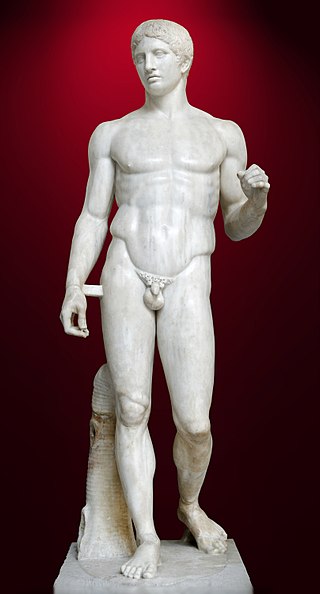
Contrapposto is an Italian term that means "counterpoise". It is used in the visual arts to describe a human figure standing with most of its weight on one foot, so that its shoulders and arms twist off-axis from the hips and legs in the axial plane.

The Italian Renaissance was a period in Italian history covering the 15th and 16th centuries. The period is known for the initial development of the broader Renaissance culture that spread across Western Europe and marked the transition from the Middle Ages to modernity. Proponents of a "long Renaissance" argue that it started around the year 1300 and lasted until about 1600. In some fields, a Proto-Renaissance, beginning around 1250, is typically accepted. The French word renaissance means "rebirth", and defines the period as one of cultural revival and renewed interest in classical antiquity after the centuries during what Renaissance humanists labelled as the "Dark Ages". The Italian Renaissance historian Giorgio Vasari used the term rinascita ("rebirth") in his Lives of the Most Excellent Painters, Sculptors, and Architects in 1550, but the concept became widespread only in the 19th century, after the work of scholars such as Jules Michelet and Jacob Burckhardt.
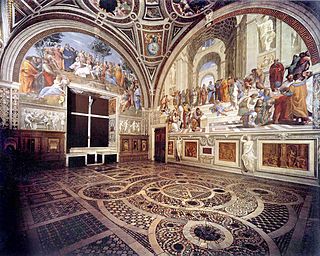
In art history, the High Renaissance was a short period of the most exceptional artistic production in the Italian states, particularly Rome, capital of the Papal States, and in Florence, during the Italian Renaissance. Most art historians state that the High Renaissance started between 1490 and 1500, and ended in 1520 with the death of Raphael, although some say the High Renaissance ended about 1525, or in 1527 with the Sack of Rome by the mutinous army of Charles V, Holy Roman Emperor, or about 1530. The best-known exponents of painting, sculpture and architecture of the High Renaissance include Leonardo da Vinci, Michelangelo, Raphael, and Bramante. In the 21st century, the use of the term has been frequently criticized by some academic art historians for oversimplifying artistic developments, ignoring historical context, and focusing only on a few iconic works.
Vernacular literature is literature written in the vernacular—the speech of the "common people".

Museo Galileo is located in Florence, Italy, in Piazza dei Giudici, along the River Arno and close to the Uffizi Gallery. The museum, dedicated to astronomer and scientist Galileo Galilei, is housed in Palazzo Castellani, an 11th-century building which was then known as the Castello d'Altafronte.
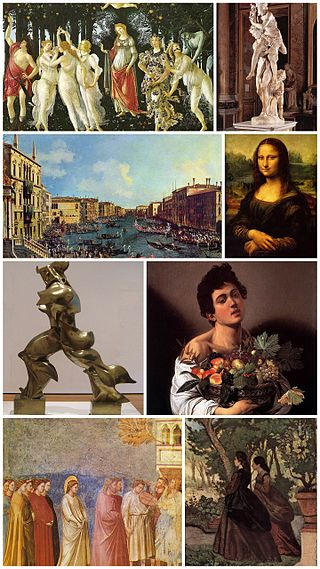
The cultural and artistic events of Italy during the period 1500 to 1599 are collectively referred to as the Cinquecento, from the Italian for the number 500, in turn from millecinquecento, which is Italian for the year 1500. Cinquecento encompasses the styles and events of the High Italian Renaissance, and Mannerism.

The Battle of Anghiari (1505) is a painting by Leonardo da Vinci in the Salone dei Cinquecento in the Palazzo Vecchio, Florence. Its central scene would have depicted four men riding raging war horses engaged in a struggle for possession of a standard at the Battle of Anghiari in 1440.
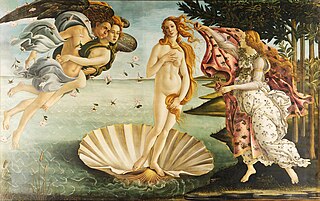
With the rediscovery of classical antiquity in the Renaissance, the poetry of Ovid became a major influence on the imagination of poets and artists, and remained a fundamental influence on the diffusion and perception of classical mythology through subsequent centuries. From the early years of the Renaissance, artists portrayed subjects from Greek and Roman mythology alongside more conventional Christian themes. Among the best-known subjects of Italian artists are Botticelli's Birth of Venus and Pallas and the Centaur, the Ledas of Leonardo da Vinci and Michelangelo, and Raphael's Galatea. Through the medium of Latin and the works of Ovid, Greek myth influenced medieval and Renaissance poets such as Petrarch, Boccaccio and Dante in Italy.
The following outline is provided as an overview of and topical guide to the Renaissance:

Studio Arts College International (SACI), Florence, Italy was an educational institution for undergraduate and graduate university-level students for studio art, design, and liberal arts instruction. SACI was founded by artist and director emeritus Jules Maidoff in Tuscany in 1975. In June 2021, the Board of Trustees communicated the closing process of the school, as a consequence of the financial challenges caused by the COVID-19 global pandemic.
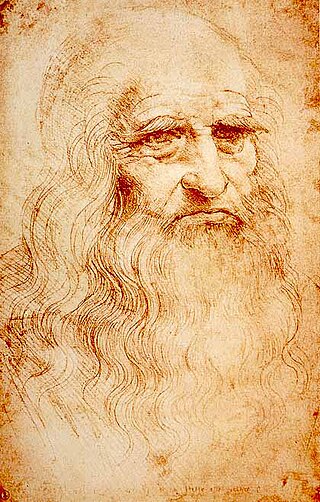
Science and technology in Italy has a long presence, from the Roman era and the Renaissance. Through the centuries, Italy has advanced the scientific community which produced many significant inventions and discoveries in biology, physics, chemistry, mathematics, astronomy, and the other sciences. In 2019, Italy was the 6th world producer of scientific articles publishing more than 155,000 documents. From 1996 to 2000, it published a total of 2 million scientific articles. Italy was ranked 28th in the Global Innovation Index in 2022.

Il più grande italiano di tutti i tempi was an Italian television show based on the British 100 Greatest Britons transmitted on Rai 2 in January and February 2010.
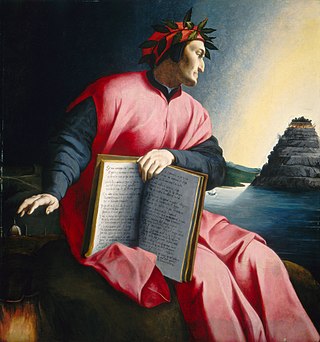
Italophilia is the admiration, appreciation or emulation of Italy, its people, culture and its contributions to Western civilization. Its opposite is Italophobia.
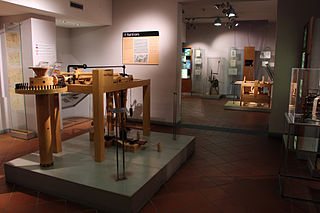
The Museo Ideale Leonardo da Vinci is located in Vinci, Leonardo da Vinci's birthplace, in the province of Florence, Italy. It is part of the Museo leonardiano di Vinci.
Paolo Galluzzi is an Italian historian of science.
Carmen C. Bambach (1959) is an American art historian and curator of Italian and Spanish drawings at the New York Metropolitan Museum of Art who specializes in Italian Renaissance art. She is considered one of the world's leading specialists on Leonardo da Vinci, especially his drawings.

The Altoviti are a prominent noble family of Florence, Italy. Since the medieval period they were one of the most distinguished banking and political families appointed to the highest offices of the Republic of Florence, friends and patrons of Galileo Galilei, Vasari, Raphael, and Michelangelo. They had a close personal relationship with the papacy. Through a predominant endogamous marriage policy they established alliances with dynasties of principal and papal nobility as the Medici, Cybo, Rospigliosi, Sacchetti, Corsini, and Aldobrandini.
Italian soft power, the capacity of Italy to influence other countries and cultures without using coercive means has evolved and changed over time with modern Italy manifesting soft power primarily through Italian cultural heritage, language, cuisine, and diplomacy. Historically, Fascist Italy employed soft power through Italian cultural heritage, from the Roman Empire to the Renaissance. Joseph Nye defined soft power as the ability of a country to persuade others to do what it wants without force or coercion. Unlike hard power, which involves military and economic strength. Italy has been dubbed a "soft power superpower".














